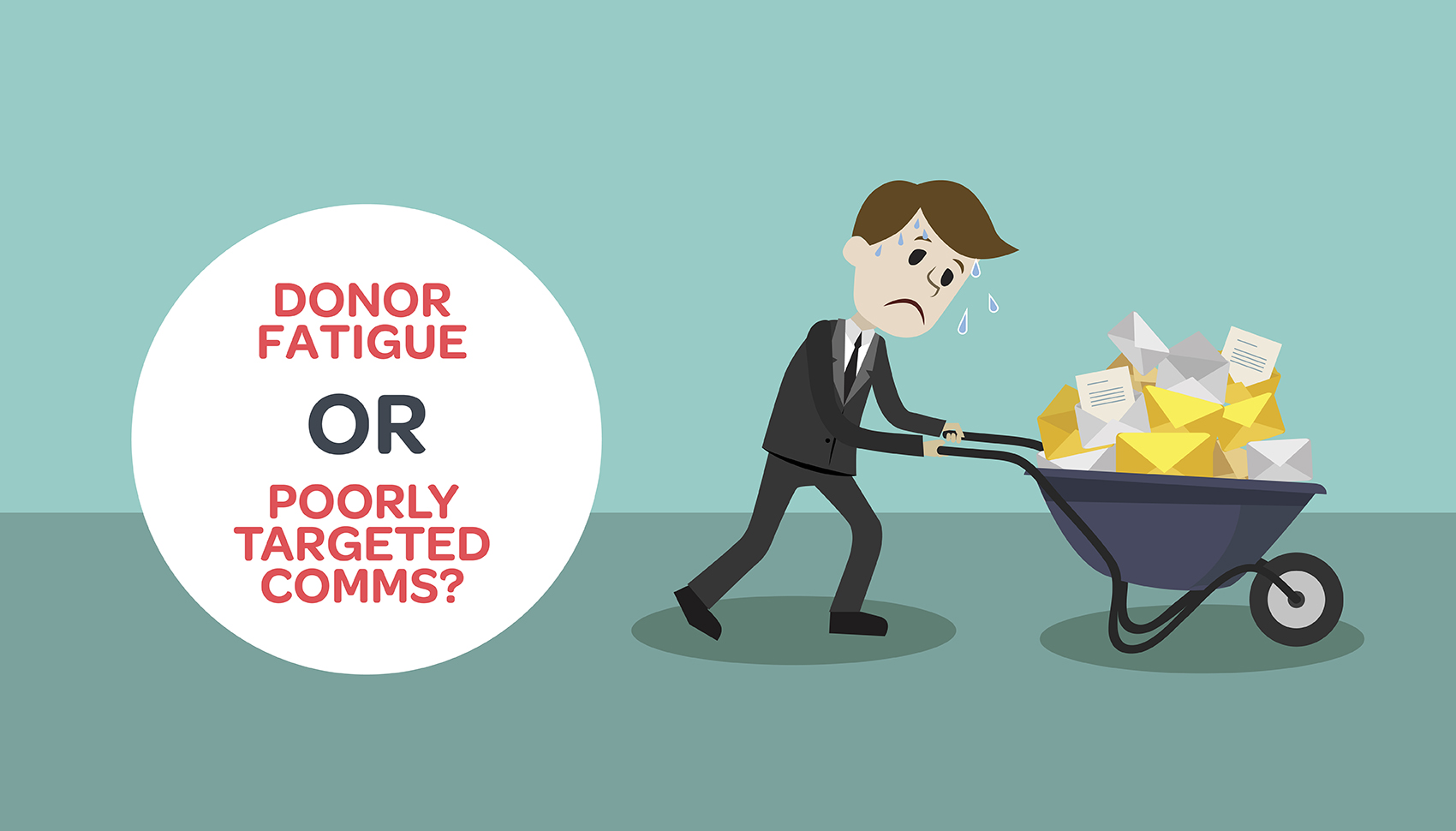With the rather extreme cuts to non-profit funding by the Australian government, the dependence on public donations has grown. It continues to grow and has now reached a place where many donors begin to feel overwhelmed by the vast number of charities, causes and organisations asking for dollars to survive.
So how do orgnisations continue to get cut through in this overly saturated [for lack of a better word], market? How can they overcome donor fatigue?
We know that strategies for reducing donor risk and increasing the resonance of the message are pretty key. But there seems to be a significant gap between nonprofits who have effective and successful fundraising campaigns and those that hope that the status quo direct mail campaign to their ‘loyalists’ will be enough.
In this two part series, we look at some of these differences, identify potential shortfalls and problems and then look at some of the more effective ways nonprofits can bridge the gap, reduce donor fatigue and achieve higher funding rates.
Excessive correspondence, poor story telling
Having an open door and access to donors and interested parties is an incredibly valuable thing. But for some nonprofits, a lack of cohesion between frequency of emailing the donor list and the importance of the message can leave donors feeling uninspired to engage. Is your message compelling enough to warrant a direct email? Are you informing and reaffirming the mission of your organisation? With every piece of communication you want the audience to be interested. When organisations start to send email for the sake of ‘keeping in touch’ or ‘help needed’ without anything of value-included donors begin to stop opening them and the appeal can be lost for some time.
Donor profiling or lack thereof
For some nonprofits there can be less emphasis on profiling donors. Or perhaps this is something that isn’t refreshed over time as new donors join. Profiling your donors shouldn’t just be about targeting those who have the funds to give. It’s about targeting messages to appeal to the reasons why they believe in your organisation in the first place. What attracts them to the charity? What is important to them? This allows communications to be targeted and somewhat tailored. Don’t make the mistake of painting all donors with the same brush.
Tried and tested and… yawn
It’s the second Tuesday of the month, you know what that means… email time! While some nonprofits may not have the resources to constantly think up something innovative, just relying on the ‘same old, same old’ is not going to bring new results. It is worth spending some time to become more strategic. Thinking of new ways that you can take your current information and assets, expand on them, and develop new ways of speaking and appealing to donors will make a substantial difference.
See also: Developing your fundraising strategy
See also: Successful email marketing campaigns
Ask versus giving
It is not that donors are tired to give, rather as pointed out by a prominent executive of a fundraising firm, it is that they are inundated with asks. “I don’t find high-net-worth donors are tired of giving, but they’re feeling inundated and fatigued with the myriad requests for support that they receive from the charitable sector,” she says. In the same article, a study conducted in Canada found that 43% of donors while open to give more, feared that their money may not be used effectively or that they would be asked continuously to give more in greater and greater amounts. Appealing to your donor’s generosity to give needs to be balanced with proof around how their giving is making a real impact. This reduces the perceived risk for donors and builds much needed trust and buy-in.
Want some help creating your fundraising communications?
Successful fundraising doesn’t have to be complicated or expensive. Make It Happen has helped many NFPs with fundraising communications. If you’d like to chat about your NFP’s needs, call on 02 8076 9090 or email info@mih.com.au

